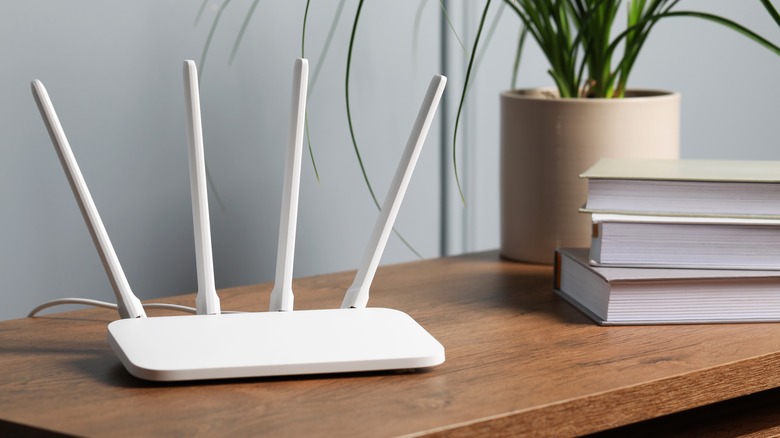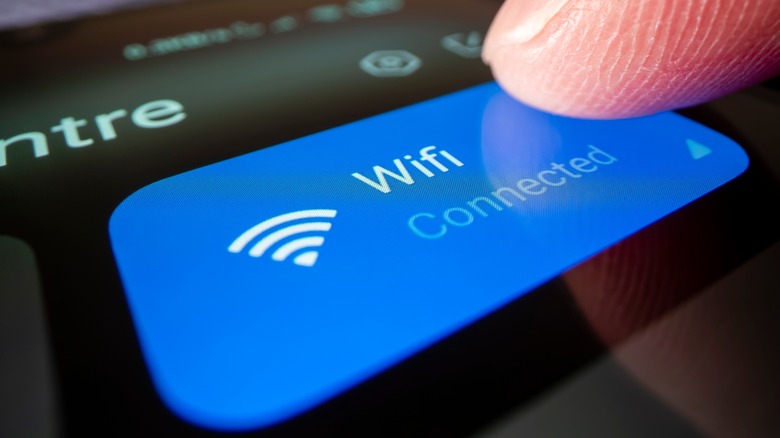Wi-Fi 7 Vs. Wi-Fi 6: What Features Differentiate The Two?
Ever since the 802.11 wireless networking protocol standard was introduced by the Institute of Electrical and Electronics Engineers in 1997 as "Wi-Fi," we have come to rely on the standard for all wireless communication — from phones, to gaming consoles, computers, and more.
Wi-Fi today, much like the evolution of the internet itself, doesn't look like it did back in 1997. Every couple of years, the IEEE Standards Association updates the networking protocol with higher speeds and more bandwidth. This is much in the same way that cellular internet goes through upgrades every generation, from 3G to 4G, and now 5G, with phone companies already preparing for 6G.
Wi-Fi 6 was introduced back in 2019, and at the time it was the big Wi-Fi upgrade we needed. But that was before the pandemic, which increased our need for faster and more reliable Wi-Fi as working from home became more prominent. Now, Wi-Fi 7 is here, and you might be wondering whether you should update your router, or if you'll even see any difference in your internet speeds. If that's the case, here are all the features that make Wi-Fi 7 different from Wi-Fi 6.
What's the difference between Wi-Fi 6 and 7?
Wi-Fi 6 offers speeds up to 9.6 Gbps, and supports both 2.4 GHz and 5 GHz, which was a big leap from the previous generation as it supported the increasing number of smart gadgets consumers owned and heavier internet use. A year after its release, Wi-Fi 6E was introduced in 2020, and it added support for 6 GHz bands, making it even easier to connect more devices to a router without loss of speed.
Like previous upgrades, Wi-Fi 7 comes with higher speeds and more connections. Using protocol 802.11bn, Wi-Fi 7 can theoretically reach up to 46 Gbps, while Intel's demonstrations using a laptop with Wi-Fi 7 offered average speeds of 5.8 Gbps, compared to the 2.4 Gbps of Wi-Fi 6 and Wi-Fi 6E. This easily allows for 8K video streaming, and reduces the download of a 15 GB file to 25 seconds down from the minute it takes with Wi-Fi 6.
Wi-Fi 7 has twice the channel size between devices than Wi-Fi 6, allowing for more data being transmitted in the same amount of time, which leads to low latency in cloud gaming and better use of AR and VR applications. Compared to Wi-Fi 6, the new generation allows for twice as many connections, without losing connectivity.
What's new in Wi-Fi 7?
One key feature of Wi-Fi 7 is Multi-Link Operation, which allows devices connected to the network to simultaneously connect on two bands as opposed to a single band in previous Wi-Fi generations — meaning you don't need to have a dedicated Wi-Fi network band on 2.4 GHz and another one for 5 GHz, a feature available on smartphones for years. This results in twice the throughput as the network balances traffic, leading to better reliability in the connection as well as faster speeds since not one band gets congested.
Another new feature with Wi-Fi 7 is puncturing. With previous generations of Wi-Fi, any interference will impact the entire channel, but in Wi-Fi 7, puncturing limits the interference to only a portion of the channel. This prevents total loss of the network's channel, and makes data transfers faster, particularly in congested environments with many devices accessing the network, or many Wi-Fi signals using the same frequencies. This provides backhaul links with high throughput that improves speed when using a mesh router system.
Consumers should note that in order to benefit from Wi-Fi 7, you don't only need a Wi-Fi 7 router, but also Wi-Fi 7 devices; meaning phones, gaming consoles and other devices must be compatible with the network protocol.


